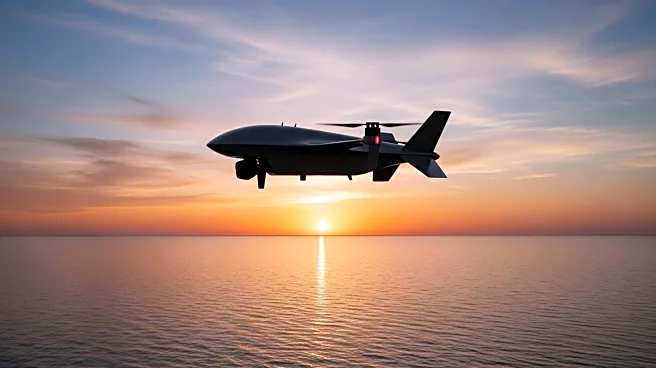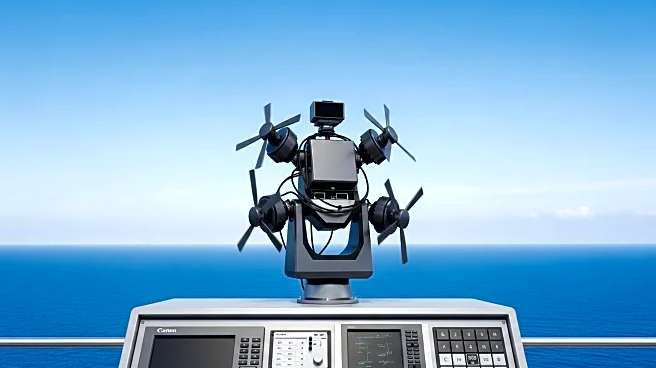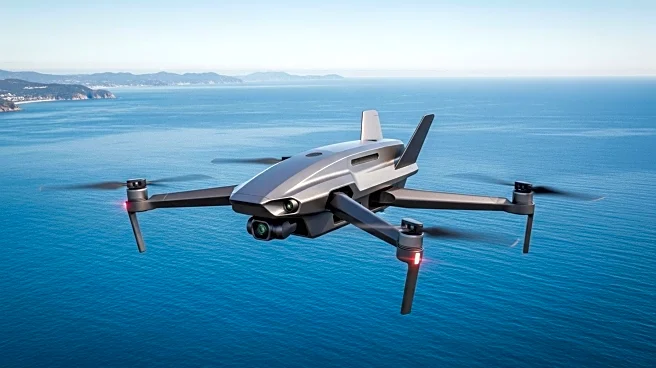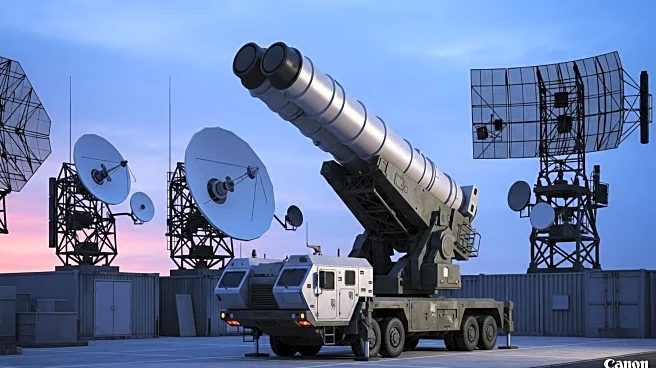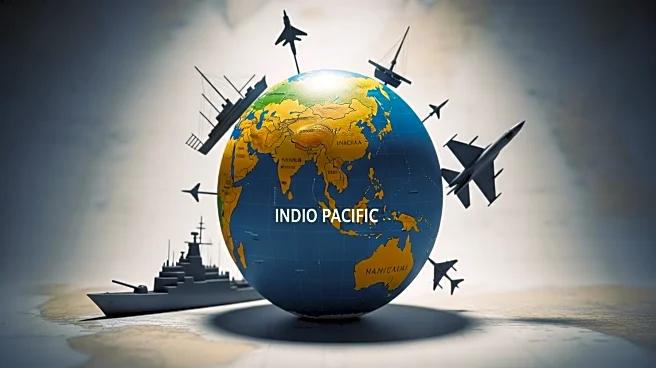What is the story about?
What's Happening?
A U.S. Navy MQ-4C drone was recently tracked flying near China's coastline, specifically over the Yellow Sea and the East China Sea. This unmanned aircraft, designed for maritime surveillance, was launched from Japan's Okinawa Island, a strategic location for U.S. military operations in the region. The drone's flight path extended from China's Shandong Province to South Korea and further south near Taiwan's northern coast and China's Fujian Province. The MQ-4C drone, capable of flying at altitudes above 50,000 feet for over 24 hours, is equipped with multiple sensors for persistent maritime surveillance. This operation comes amid ongoing tensions between the U.S. and China, with Beijing protesting U.S. reconnaissance activities as threats to its sovereignty and security.
Why It's Important?
The presence of U.S. drones near China's borders underscores the strategic military balance in the Western Pacific, where the U.S. maintains a significant military presence to counter China's growing power. The deployment of advanced assets like F-35 fighter jets and nuclear submarines reflects the U.S.'s commitment to regional security and deterrence. China's protests against these reconnaissance missions highlight the geopolitical friction and the potential for military confrontations. The U.S. aims to gather intelligence and maintain surveillance capabilities, which are crucial for monitoring regional developments and enforcing international sanctions, such as those against North Korea.
What's Next?
The U.S. is expected to continue its reconnaissance flights near China, utilizing both manned and unmanned aircraft. The ongoing military activities may lead to further diplomatic tensions, with China likely to continue its protests against what it perceives as provocative actions. The situation remains delicate, with the potential for military encounters between U.S. and Chinese forces. Both nations may engage in diplomatic dialogues to address these security concerns, although the likelihood of immediate resolution remains uncertain.
Beyond the Headlines
The continued U.S. surveillance operations near China could have broader implications for international relations and regional security dynamics. These activities may influence China's military strategies and its approach to regional alliances. The situation also raises questions about the ethical dimensions of military surveillance and the balance between national security and international diplomacy. Long-term shifts in military posturing and alliances in the Asia-Pacific region could be triggered by these developments.
AI Generated Content
Do you find this article useful?
